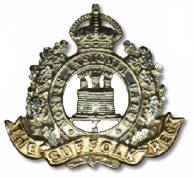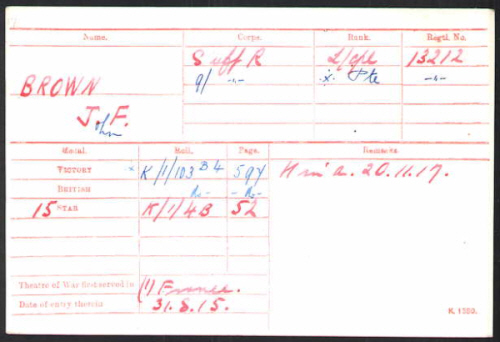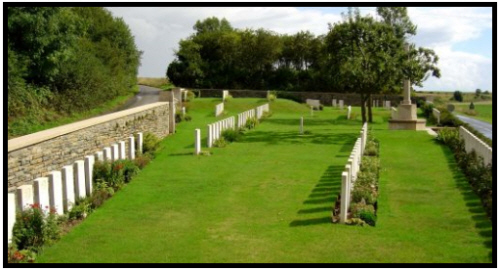



No.13212, Lance Corporal, John Felix BROWN
Aged 22

|
John Felix Brown was born Cavendish (Sudbury Q1-1894 4A:761), son of William and Elizabeth BROWN (née NEWMAN)
His father had in 1887 married Cavendish born Maria THOMPSON, their daughter Letitia born 3rd May,1889 in Cavendish. Maria died in 1897. His mother had married Samuel FINCH in 1884, he died in 1890 and she married William BROWN in 1898 1901 census...Aged 7 he was at High Street, Cavendish with his father William BROWN [39] maltster; his step mother Elizabeth [37] born Foxearth, Essex; half brothers Bertram FINCH [15] blacksmith and Alfred G FINCH [14] and Arthur W BROWN [1]; sister Letitia O [11]. All except his mother were born in Cavendish 1911 census...Aged 17, a gardener's lad, he was at Maltings Yard, Cavendish with his parents; half brothers Alfred George FINCH(postman), Arthur William and Robert Victor [9]; half sisters Anna Elizabeth [7] and Edith Emma [5]. The new siblings all born in Cavendish. George Argent, John Ballard, John Brown, Jack Johnson, Charles Slater, Frank Underwood and Arthur Wells, from their numbers, seem to have all joined the Suffolks on the same day |

|
He enlisted in the Suffolk Regiment, (from his number) early in 1911.
The battalion were taking part in an attack on the Hindenburg Line between Villers Plouich and Beacamp. The war diary covers several pages, but in summary(from Lt Col Murphy's "History of the Suffolk Regiment": The attack started at 6:20 am on 20th November with 324 tanks and six divisions on a six mile front. The tanks crashed through all obstacles and drove the enemy to ground. The 9th Suffolks quickly crossed No Man's Land and reached the German front line. By 9 am they had reached their objective, were in touch with both flank battalions and had their HQ in the original German front line. The village of Ribecourt fell easily and "C" Coy pressed forward to Marcoing with orders to seize the cross road sin front of the village, the bridges over the river and the village itself. When the y began to advance at 11 am they found 2 platoons had already moved off and 2nd Lt Hopkins and his batman went ahead to try and stop them. Reaching the cross roads they found 4 Germans who surrendered. Seeing 2nd Lt Taylor and his men 400 yards away he signalled them and they joined up. "C" Coy now advanced and entered Marcoing. A tank appeared and some 29th Division troops were seen entering the village from the north. Job done they marched back to Ribecourt, reaching HQ after dark having captured a village, taking 100 prisoners and a machine gun, for the loss of 2 casualties. At nightfall the battalion, now held in reserves occupied the line of trenches captured by them in the morning. Altogether they had captured 150 Germans and 3 machine guns for the loss of 50 casualties. CWGC records give 11 killed on the 20th. Six (including John Brown)had their graves destroyed in later fighting and so are commemorated on the Special Memorial at Ribecourt Cemetery. |

photo; Pierre Vandervelden www.inmemories.com
click here to go to the Commonwealth War Graves Commission website for full cemetery/memorial details